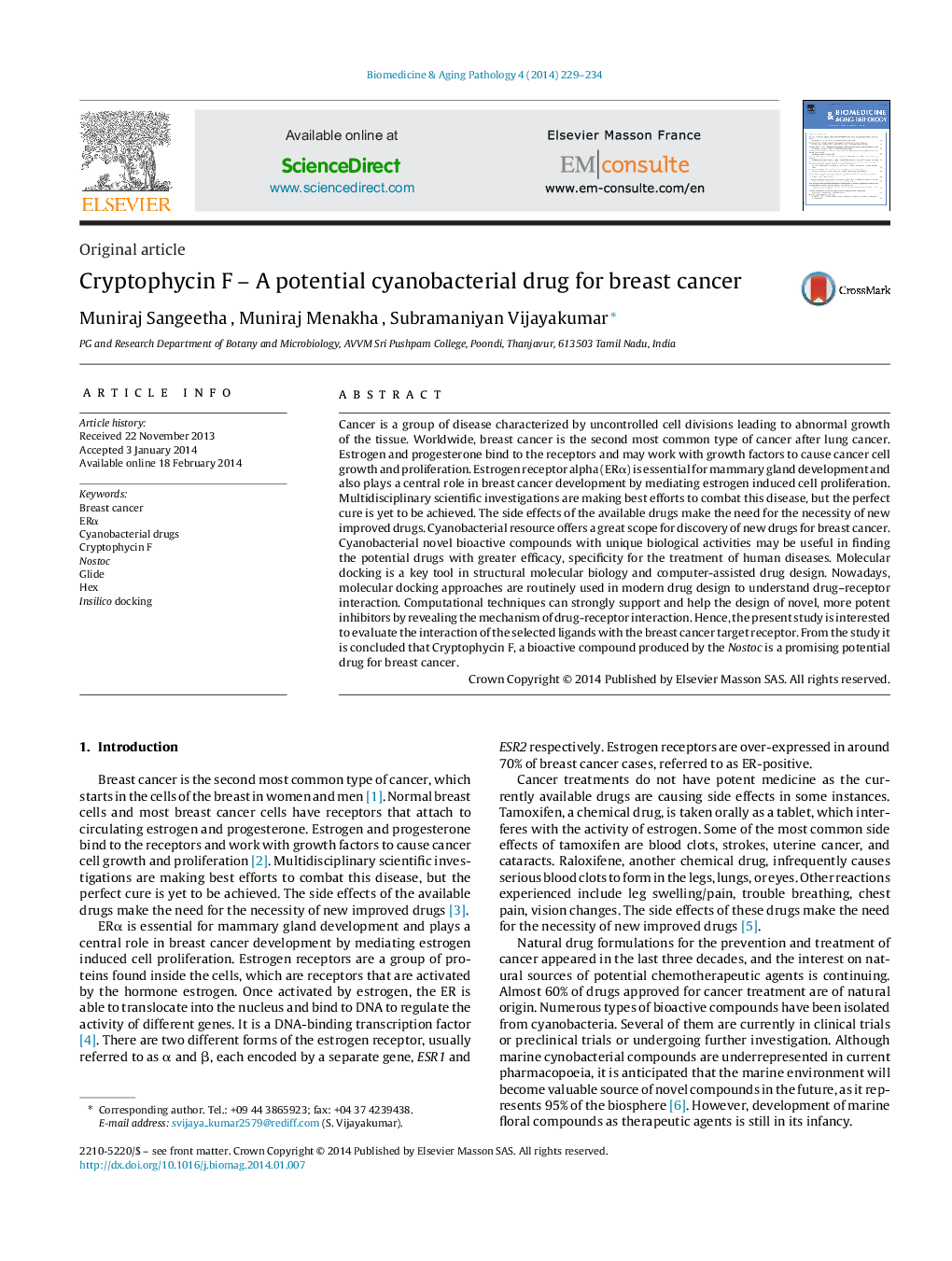| Article ID | Journal | Published Year | Pages | File Type |
|---|---|---|---|---|
| 2576215 | Biomedicine & Aging Pathology | 2014 | 6 Pages |
Cancer is a group of disease characterized by uncontrolled cell divisions leading to abnormal growth of the tissue. Worldwide, breast cancer is the second most common type of cancer after lung cancer. Estrogen and progesterone bind to the receptors and may work with growth factors to cause cancer cell growth and proliferation. Estrogen receptor alpha (ERα) is essential for mammary gland development and also plays a central role in breast cancer development by mediating estrogen induced cell proliferation. Multidisciplinary scientific investigations are making best efforts to combat this disease, but the perfect cure is yet to be achieved. The side effects of the available drugs make the need for the necessity of new improved drugs. Cyanobacterial resource offers a great scope for discovery of new drugs for breast cancer. Cyanobacterial novel bioactive compounds with unique biological activities may be useful in finding the potential drugs with greater efficacy, specificity for the treatment of human diseases. Molecular docking is a key tool in structural molecular biology and computer-assisted drug design. Nowadays, molecular docking approaches are routinely used in modern drug design to understand drug–receptor interaction. Computational techniques can strongly support and help the design of novel, more potent inhibitors by revealing the mechanism of drug-receptor interaction. Hence, the present study is interested to evaluate the interaction of the selected ligands with the breast cancer target receptor. From the study it is concluded that Cryptophycin F, a bioactive compound produced by the Nostoc is a promising potential drug for breast cancer.
